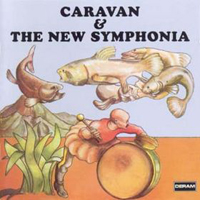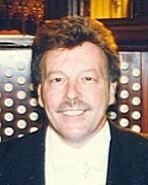Related Research Articles

A symphony is an extended musical composition in Western classical music, most often for orchestra. Although the term has had many meanings from its origins in the ancient Greek era, by the late 18th century the word had taken on the meaning common today: a work usually consisting of multiple distinct sections or movements, often four, with the first movement in sonata form. Symphonies are almost always scored for an orchestra consisting of a string section, brass, woodwind, and percussion instruments which altogether number about 30 to 100 musicians. Symphonies are notated in a musical score, which contains all the instrument parts. Orchestral musicians play from parts which contain just the notated music for their own instrument. Some symphonies also contain vocal parts.

Felix August Bernhard Draeseke was a composer of the "New German School" admiring Franz Liszt and Richard Wagner. He wrote compositions in most forms including eight operas and stage works, four symphonies, and much vocal and chamber music.
Jan Novák was a Czech composer of classical music. Novák was primarily active in the 1960s and composed the music for several films of Karel Kachyňa. Novák also composed music for the films of animators Jiří Trnka and Karel Zeman, the leading figures of the Czech animated film, as well as for Wir.
An Alpine Symphony, Op. 64, is a tone poem for large orchestra written by German composer Richard Strauss in 1915. It is one of Strauss's largest non-operatic works; the score calls for about 125 players and a typical performance usually lasts around 50 minutes. The program of An Alpine Symphony depicts the experiences of eleven hours spent climbing an Alpine mountain.

Jorge Washington Peña Hen was a Chilean composer and musician, founder of the first children's symphony orchestra in Latin America. Due to his militancy in the Socialist Party, he was shot by the Chilean Army during the passage of the Caravan of Death in the Coquimbo Region.
Kan Ishii was a Japanese composer, and the brother of composer Maki Ishii. His father, Baku Ishii, was a prominent Japanese ballet dancer. His Symphonia Ainu won a prize at the 1958 Art Festival, inspiring him to do further work inspired by nationalist primitivism. His musical style appeals directly to the emotions, and shows the influence of Carl Orff. In addition to orchestral and vocal music, he has written extensively for the stage, including 6 operas, 3 ballets and 9 film scores, including the 1962 science-fiction film Gorath. Ishii accepted a position as professor at Shōwa College of Music in 1986.

Symphonia Domestica, Op. 53, is a tone poem for large orchestra by Richard Strauss. The work is a musical reflection of the secure domestic life so valued by the composer himself and, as such, harmoniously conveys daily events and family life.

The Auckland Philharmonia is a symphony orchestra based in Auckland, New Zealand. Its principal concert venue is the Auckland Town Hall, and it is also the accompanying ensemble for Auckland stage performances by New Zealand Opera and the Royal New Zealand Ballet. The Auckland Philharmonia's patrons are Dame Catherine Tizard, Dame Kiri Te Kanawa, Dame Rosanne Meo and Barbara Glaser.
The Wetzler Symphony Orchestra was founded in New York City by the Frankfurt born conductor and composer Hermann Hans Wetzler.

Caravan and the New Symphonia is a record by Caravan recorded on 28 October 1973 at the Theatre Royal in Drury Lane and originally released in 1974 on UK Decca's subsidiary Deram. Bringing the band and The New Symphonia Orchestra together for this recording was the work of Martyn Ford, conductor of the New Symphonia, and John G. Perry, who played bass with Caravan at the time. An expanded and re-ordered version was published in 2001. This version claims to have the tracks in the order as played.

Yoshirō Vladimir Irino was a Japanese composer.

The Burleske in D minor is a composition for piano and orchestra written by Richard Strauss in 1885–86, when he was 21.
Orchestra London Canada was a Canadian professional symphony orchestra based in London, Ontario. The orchestra was founded by conductor and violinist Bruce Sharpe in 1937 with the name the London Civic Symphony Orchestra. In 1957 the orchestra changed its name to the London Symphony Orchestra, and it adopted its current name in 1981.
Rudi Tas is a Flemish award-winning composer of choral music, chamber music, orchestral music, conductor and organist. He studied at the Royal Conservatory of Brussels and Ghent.
Daniele Zanettovich is an Italian composer and conductor.
The Concerto for Orchestra is a four-movement concerto for orchestra written in 1969 by the American composer Elliott Carter. The work was commissioned by the New York Philharmonic to commemorate their 125th anniversary and was premiered by the orchestra under the conductor Leonard Bernstein in the Philharmonic Hall, New York City, on February 5, 1970.
A Symphony of Three Orchestras is an orchestra composition by the American composer Elliott Carter. The work was commissioned by the New York Philharmonic through a grant from the National Endowment for the Arts. It was composed from June through December 1976 and was first performed in New York City on February 17, 1977 by the New York Philharmonic under the conductor Pierre Boulez. The composition is dedicated to Boulez and the New York Philharmonic.
The Symphonia: sum fluxae pretium spei is an orchestral triptych by the American composer Elliott Carter. Its three movements were composed between 1993 and 1995. The complete work was first performed on April 25, 1998 at Bridgewater Hall, Manchester by the BBC Symphony Orchestra under the conductor Oliver Knussen. The second movement "Adagio tenebroso" was a finalist for the 1996 Pulitzer Prize for Music.

Symphonia is a live album of the music project Schiller, created by the German electronic musician Christopher von Deylen. The album was released on October 17, 2014. The album is a live recording of the ″SCHILLER meets CLASSIC″ open air concert with the Berlin Symphonic Pop Orchestra at the Classic Open Air 2014 event on the Gendarmenmarkt in Berlin. The orchestra consisted of 60 musicians. On this album Schiller has collaborated with the singers Midge Ure, Jaël Malli, Eva Mali and Der Graf from Unheilig. It was released in different editions. The cover artwork shows a bursting soap bubble in front of a black background. The album reached in its first week number 4 of the German albums chart.

John-Michael Caprio was an American conductor and organist who served as the music director at St. Patrick's Cathedral in New York City between 1990 and 1997. During his seven years at the renowned Manhattan landmark on Fifth Avenue, he implemented an expanded concert program, worked to enhance the quality of music in liturgical services, and conducted the cathedral's choirs and notable soloists. Caprio arranged and conducted performances televised in the U.S., the United Kingdom, and Ireland, along with producing compact disc recordings of the cathedral's choir and organ. Caprio's tenure saw the rebuilding of the cathedral's historic pipe organ and his organization of music for the massive Central Park rally celebrating the visit of Pope John Paul II in 1995.
References
- ↑ Satola, Mark. "Symphonia Serena, for orchestra". AllMusic. Retrieved 23 March 2014.